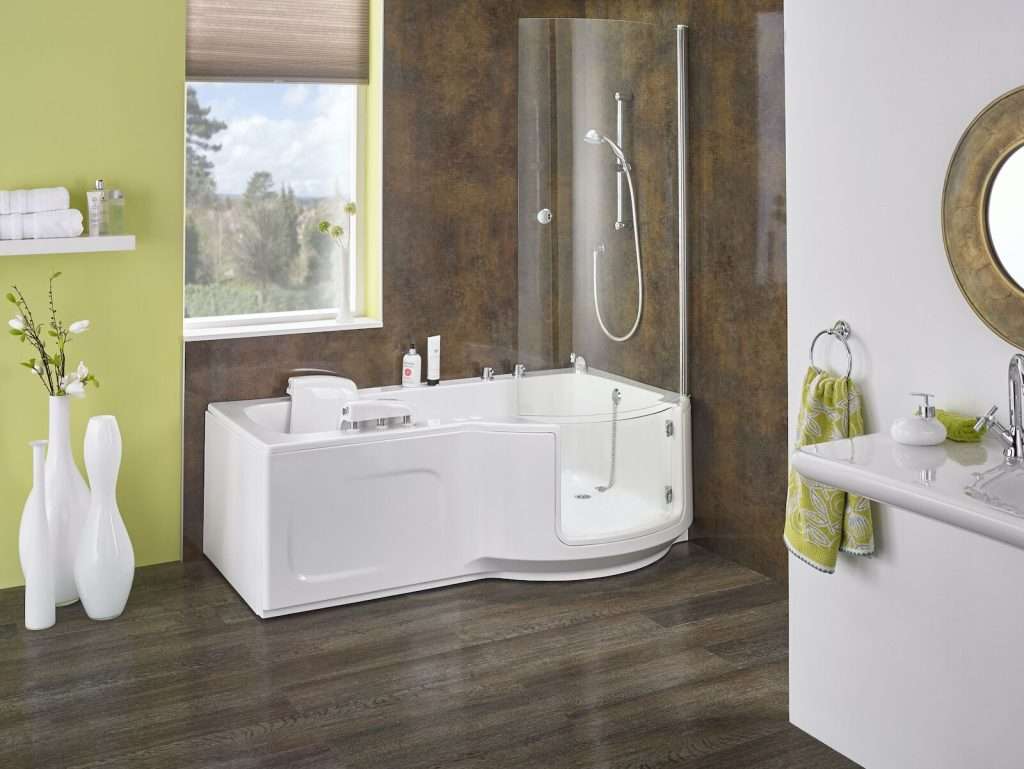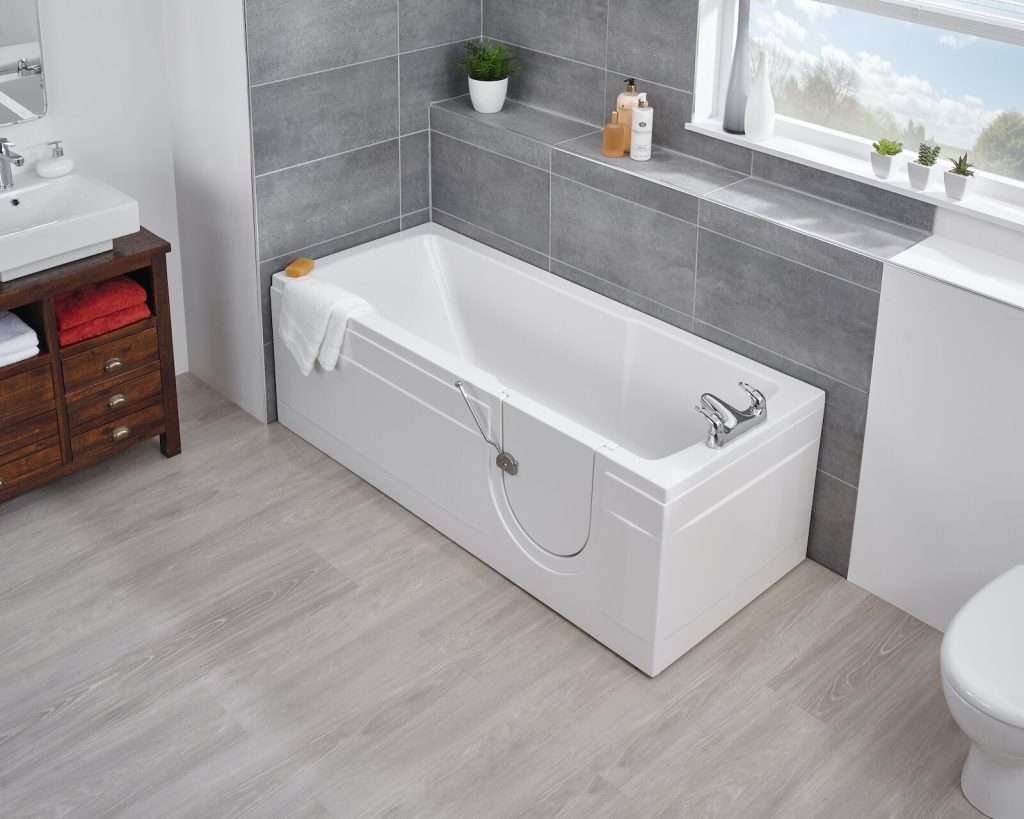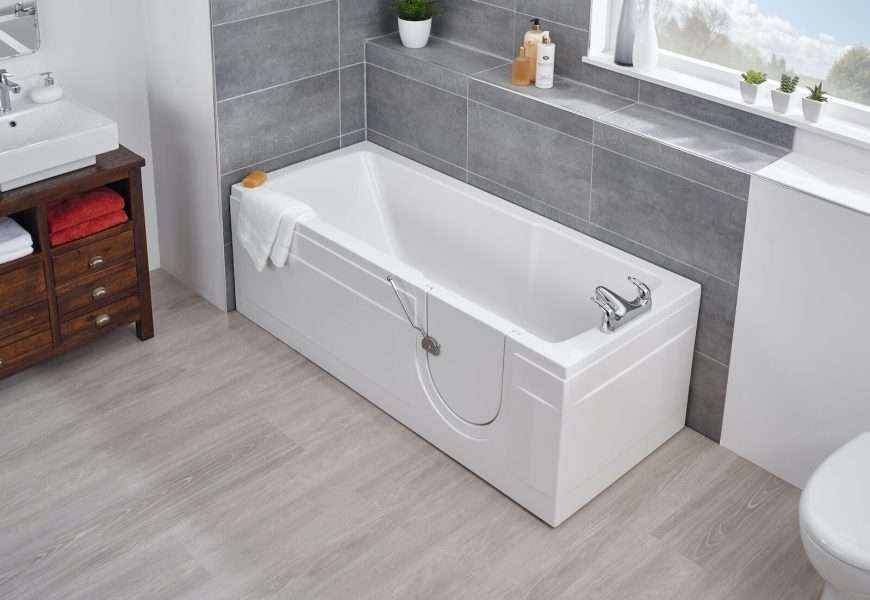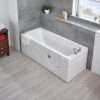As our loved ones age, their daily routines can become challenging, especially when it comes to bathing, a task many of us take for granted. Traditional baths, with their high edges and slippery surfaces, pose significant risks to the elderly who may struggle with balance and mobility. This can turn a simple pleasure into an activity fraught with danger. But it doesn’t have to be this way. Imagine a bathing solution that not only prioritises safety but also restores the joy of a relaxing soak. That’s where walk-in baths come in.
With features such as non-slip surfaces, supportive handrails, and easy-access doors, walk-in baths provide a safer and more comfortable bathing experience for seniors. In this guide, we will explore various styles and brands of accessible baths, delving into their unique features and benefits. We’ll also offer practical advice on choosing and installing a walk-in bath to ensure your loved ones can continue to bathe independently and with dignity.

Walk-In Baths: An Overview
Walk-in baths are specifically designed to address the safety concerns associated with traditional bathtubs. They come equipped with an easily accessible door that eliminates the need to step over high bath edges, thereby reducing the risk of slips and falls. The interior of the bath is typically fitted with non-slip surfaces and strategically placed handrails for added stability and support during bathing.
Various brands offer a range of styles and additional features to enhance comfort and convenience. Some models include therapeutic features such as hydrotherapy jets for a spa-like experience or heated seats for extra warmth and relaxation. When choosing a walk-in bath, it’s essential to consider the user’s needs, the space available, and your budget. With careful selection, a walk-in bath can transform the daily bathing routine for your elderly loved ones, combining safety with the luxury of a relaxing soak.
Designing Bathrooms for the Elderly
Creating an elderly-friendly bathroom involves more than just selecting the correct walk-in bath, it’s about designing a space that promotes ease and safety. Consider installing grab bars around the bathroom, not just in the bathing area, but also near the toilet and sink. Lever-style taps are easier for arthritic hands to operate, and a higher toilet seat can make sitting down and standing up less challenging.
Lighting should be bright and uniform, reducing shadows and glare that could lead to falls. The flooring should be non-slip, even when wet. Adequate storage for bathing essentials within easy reach can prevent unnecessary stretching or bending. When it comes to walk-in baths, opt for models that come with adjustable shower heads and easy-to-operate doors, and remember to consider the user’s height and mobility levels. These features not only ensure safety but also uphold the user’s dignity and independence.
The Benefits of Walk-In Baths
Walk-in baths offer numerous advantages over traditional bathtubs, especially for the elderly:
- Safety: Most walk-in baths are built with non-slip surfaces, handrails, and low entry thresholds. These features significantly reduce the risk of slipping or falling during bathing.
- Comfort: Walk-in baths usually come with built-in seats, allowing the user to bathe comfortably without having to lower themselves to the floor of the tub.
- Independence: The easy-access doors in walk-in baths enable seniors to step in and out of the tub without assistance, thereby promoting independence in their daily routines.
- Therapeutic Features: Many models include hydrotherapy jets or whirlpool features that can help alleviate muscle and joint pain, offering a therapeutic bathing experience.
- Ease of Use: Walk-in baths often feature easy-to-operate controls, making them user-friendly for seniors who may struggle with complex mechanisms.
- Versatility: Many walk-in baths also have an overhead shower option, offering the flexibility to choose between a quick shower or a leisurely bath.
When choosing a walk-in bath, consider brand reputation, product quality, available features, and, importantly, the specific needs of the user. With the right choice, bathing can become a safer, more enjoyable activity for our loved ones as they age.

Choosing the Right Walk-In Bath for Your Needs
Choosing the right walk-in bath involves carefully considering the needs of the user and the features that will best meet these needs. Here are some key factors to consider:
- Size and Shape: Walk-in baths come in a variety of sizes and shapes, from compact models suitable for small bathrooms to larger, deeper tubs that allow for a full immersion soak. Measure your bathroom accurately to ensure a good fit.
- Door Type: Most walk-in baths come with inward-opening doors, but some models feature outward-opening doors for easier access. Consider the user’s mobility and the amount of bathroom space when choosing a door type.
- Therapeutic Features: Hydrotherapy jets, air spa systems, and heated seating can add a touch of luxury to the bathing experience while also offering therapeutic benefits. Consider if these features align with the user’s preferences and health needs.
- Safety Features: Non-slip surfaces, handrails, and an easy-to-reach emergency button are essential safety features. Some models also offer anti-scald technology and quick-drain systems for added safety.
- Budget: Walk-in baths can vary greatly in price depending on their features and the brand. It’s important to set a budget that takes into account not only the cost of the bath itself but also installation costs.
Remember, a good quality walk-in bath should offer a balance of safety, comfort, and luxury. Take the time to research different brands and models, read reviews, and seek professional advice if necessary. Don’t rush the decision – after all, the right walk-in bath can significantly improve the quality of life for your loved one.
Conclusion
In conclusion, walk-in baths provide a safer and more comfortable bathing solution for the elderly, enhancing their well-being and independence. The myriad of options available in terms of size, style, additional therapeutic features, and safety installations allow for customisation to the user’s specific needs and preferences.
While the initial investment may be more than a traditional bathtub, the peace of mind and improved quality of life it offers are well worth the cost. As always, making a thoughtful, well-informed decision is key in choosing the perfect walk-in bath for your loved ones.








